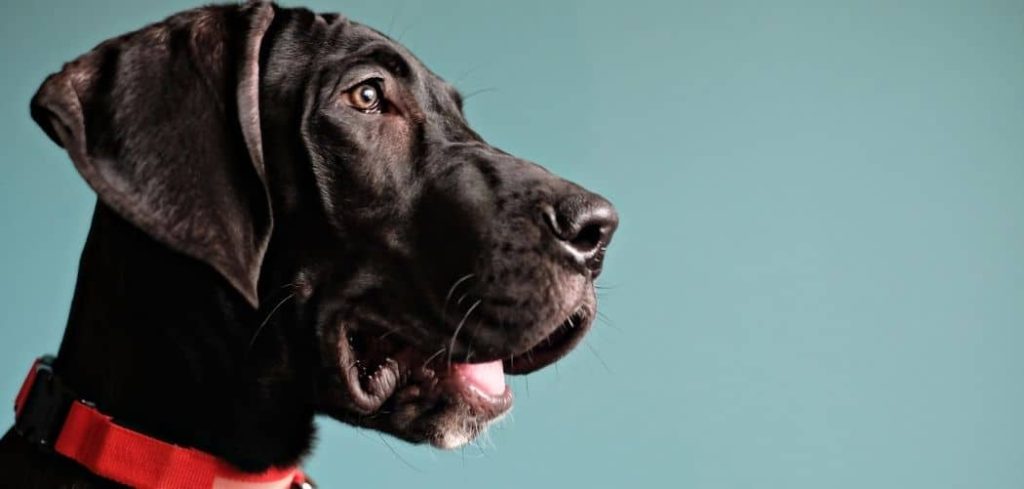If your dog is panting heavily and drinking more water than usual, it’s natural to feel concerned.
symptoms could point to something as simple as dehydration or as serious as an underlying health condition.
We outline the common causes of a dog panting and drinking excessively, what you can do at home, and when to seek veterinary help.
Dog Panting and Drinking Excessively — Why It Happens
Dogs may pant and drink excessively due to overheating, pain, hormone imbalances, or organ dysfunction. Conditions such as Cushing’s disease, diabetes, kidney problems, and heat exhaustion can all lead to these symptoms.
Sometimes, even medications or emotional stress can trigger excessive thirst and panting. Because dogs can’t tell us when something is wrong, these changes in behavior often serve as early warning signs.

Dog Panting and Drinking Excessively: Common Causes
Cushing’s Disease
Cushing’s disease is a hormonal disorder that causes the body to overproduce cortisol.
One of the hallmark signs is increased thirst and urination, along with frequent panting.
Dogs with this condition may also have a pot-bellied appearance, thinning hair, and increased appetite.
Left untreated, it can lead to complications such as high blood pressure, muscle wasting, and diabetes.
Diabetes Mellitus
Diabetes causes elevated blood sugar levels, which leads to excessive thirst as the body tries to flush out excess glucose.
Panting may occur as a secondary symptom due to discomfort, dehydration, or associated infections.
Dogs may also lose weight despite a good appetite or show signs of lethargy.
Without treatment, diabetes can lead to severe complications, including diabetic ketoacidosis.
Read more: Dog Panting Excessively and Restless (Know when it’s an emergency)
Kidney Disease
The kidneys help regulate fluid balance in the body.
When they begin to fail, dogs may drink and urinate more in an effort to compensate.
Panting can occur as a result of toxin buildup in the bloodstream, discomfort, or associated anemia.
Chronic kidney disease is common in older dogs and often progresses gradually.
Heat Exhaustion
Panting is a dog’s primary way to cool down, and drinking helps replenish lost fluids.
If your dog has been active or the weather is hot, these behaviors may simply reflect heat exhaustion.
However, if panting is excessive or your dog seems lethargic, drools, or vomits, heatstroke could be setting in.
This is a medical emergency and requires immediate cooling and veterinary care.
Read more: Dog Panting Excessively (Here’s why)
Pain or Anxiety
Pain, especially chronic or internal pain, can make a dog pant as a stress response.
Some dogs may also drink more when they’re anxious or uncomfortable.
Causes can range from arthritis to gastrointestinal issues to emotional distress.
Panting and drinking excessively in these cases are indirect signs that something is off.
Medication Side Effects
Some medications, such as steroids (like prednisone), may increase both thirst and panting.
While these side effects are common, they should still be monitored closely.
If the symptoms worsen or persist even after adjusting the medication, a vet consultation is necessary.
What to Do If Your Dog Is Panting and Drinking Excessively
Start by monitoring your dog’s water intake and panting patterns. Keep a record of how much they drink and when they tend to pant the most.
Ensure they always have access to cool, fresh water and a comfortable resting environment, especially on hot days.
Avoid strenuous activity until you understand what’s causing the symptoms. Older dogs and those with chronic conditions should be handled with extra care.
If your dog is on medication, review the potential side effects and dosage with your vet.
In some cases, a dietary change or bloodwork might be needed to pinpoint the issue.
When to Call or Visit Your Vet
You should call your vet if your dog is panting and drinking excessively along with:
Vomiting or diarrhea
Weight loss or poor appetite
Frequent urination or accidents in the house
Weakness, tremors, or collapse
Pale or yellow gums
If symptoms start suddenly or appear to worsen over time, don’t wait. Early testing can uncover issues like diabetes, Cushing’s, or kidney problems before they become critical.
Excessive thirst and panting may seem mild at first but often signal deeper health concerns that require professional care.
Read more: Dog Excessive Panting and Itching (What it means and what to do)
Key Takeaway
Panting and drinking more than usual may not seem alarming at first, but these symptoms often reveal more than simple thirst or heat.
Underlying conditions like diabetes, kidney failure, or hormonal imbalances could be at play.
If your dog’s behavior changes or these signs persist, seek veterinary advice sooner rather than later.
Being proactive can help you catch serious conditions early and keep your dog happy, hydrated, and healthy.
